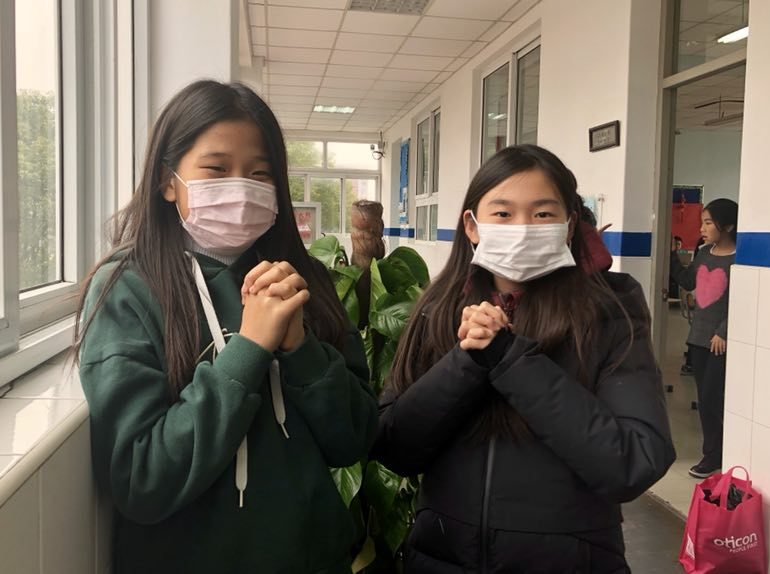No more quarantine, please
UPDATE: Due to another student catching hand-foot-and-mouth disease, grade 6 was once again put under quarantine – starting Monday, January 8 and ending on the last day of finals next week.
Last Tuesday, December 26th, marked a big day for the sixth graders: the end to a five-week quarantine due to a small outbreak of three different diseases: VZV (varicella-zoster virus), also known as chickenpox; scarlet fever; and hands-foot-and-mouth. On November 21th, an elementary parent asked the school nurse about red dots on her child, and was then confirmed to be the first case of chickenpox. As soon as the result came out from the hospital, all fourth graders – who had contacts with the child – went through check-ups and two were found with scarlet fever and hands-foot-and-mouth. Later three more of the children were found with rash, which was also a symptom of chicken pox.
But the spread of chickenpox did not just occur across the bridge among fourth grade students. As of now, fourth, sixth, and one fifth-grade homeroom were all in quarantine. There was a reason for the infection to have such a wide range. As Mrs. Adora Song, the elementary school nurse, stated, “The child who was the causative agent had the symptoms two or three weeks ago, but did not take it seriously. The source of the infection was in the classroom for a long period of time; thus the symptoms erupted all at the same time.” Luckily, most students had the vaccination so the symptoms weren’t severe. Some didn’t have fever, and the eruption was slight, with only a few red dots.
The chicken pox virus is contagious, and it spread quickly through the respiratory system, touch, and droplet transmission. Both ES and MS were using the same methods to keep the virus from spreading. The homerooms with infected students were kept in “quarantine”. Though the students still ride the buses everyday, they were restricted to having classes and lunch in their own classroom instead of the cafeteria. Every morning they went to Dr. Bao, the MHS nurse, for a check-up, in case someone was infected but the symptoms weren’t present yet. According to school policy, they had to be “isolated” and observed for 21 days so the infection could run its course, only then the quarantine period would be over.
The most important measure was maintaining a sterile environment; and so, every night, the Ayis disinfected the classrooms. They wiped the floor and desks with chlorine-contained disinfectant and sterilized the air with ultraviolet disinfection radiator. Windows were suggested to open three to five times a day – more than one hour – to keep the room ventilated. Making the decision not to enforce a complete quarantine, the only thing the school could do is to reinforce sterilization, and require bus students to wear masks.
Many people were infected with chicken pox these days. As the result, the hospitals would report the information of the patients, including the school, name, age, dates of infection, etc. This helped to keep track of the follow-ups and accumulate data, allowing the school to become more prepared. There are cases of chicken pox infection almost every year, and had distrubing impact on students in quarantine. Yash Mhapsekar (6A) said “it was okay” because “…one thing good about it was [that] during lunch we can play video games.” And as Elyse Shan (10B) recalled, “I do remember my grade going through the same thing when we were in second grade… Some students missed a lot of school while the rest of us ate boxed lunches and watched movies.”
Featured image — Justine Lee (6B) and Rachel Choi (6C) plead for no more quarantines Courtesy of Wendy Shi

